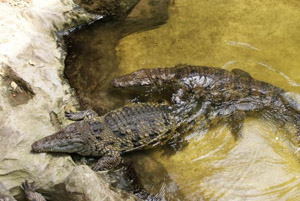Crocodiles 168 Times More Dangerous Than Sharks
 The fears connected with shark attacks are stronger in the world today than those related to much more dangerous predators – crocodiles. However, crocodiles pose a greater threat to humans than sharks do.
The fears connected with shark attacks are stronger in the world today than those related to much more dangerous predators – crocodiles. However, crocodiles pose a greater threat to humans than sharks do.
A crocodile snatched Hendrik Coetzee, a South African guide, 35, from his kayak while he led an American expedition into the heart of Congo last week. Two American tourists could only watch the scene in horror as the guide was killed and eaten by the predator. They paddled to safety unharmed. Coetzee’s body has not been recovered.
Stories about croc attacks are just as terrible as they are hopeless. Experts say that it is possible to stay to fight off a shark, but it is much more difficult or even impossible to rescue themselves from an attacking croc. (more…)

